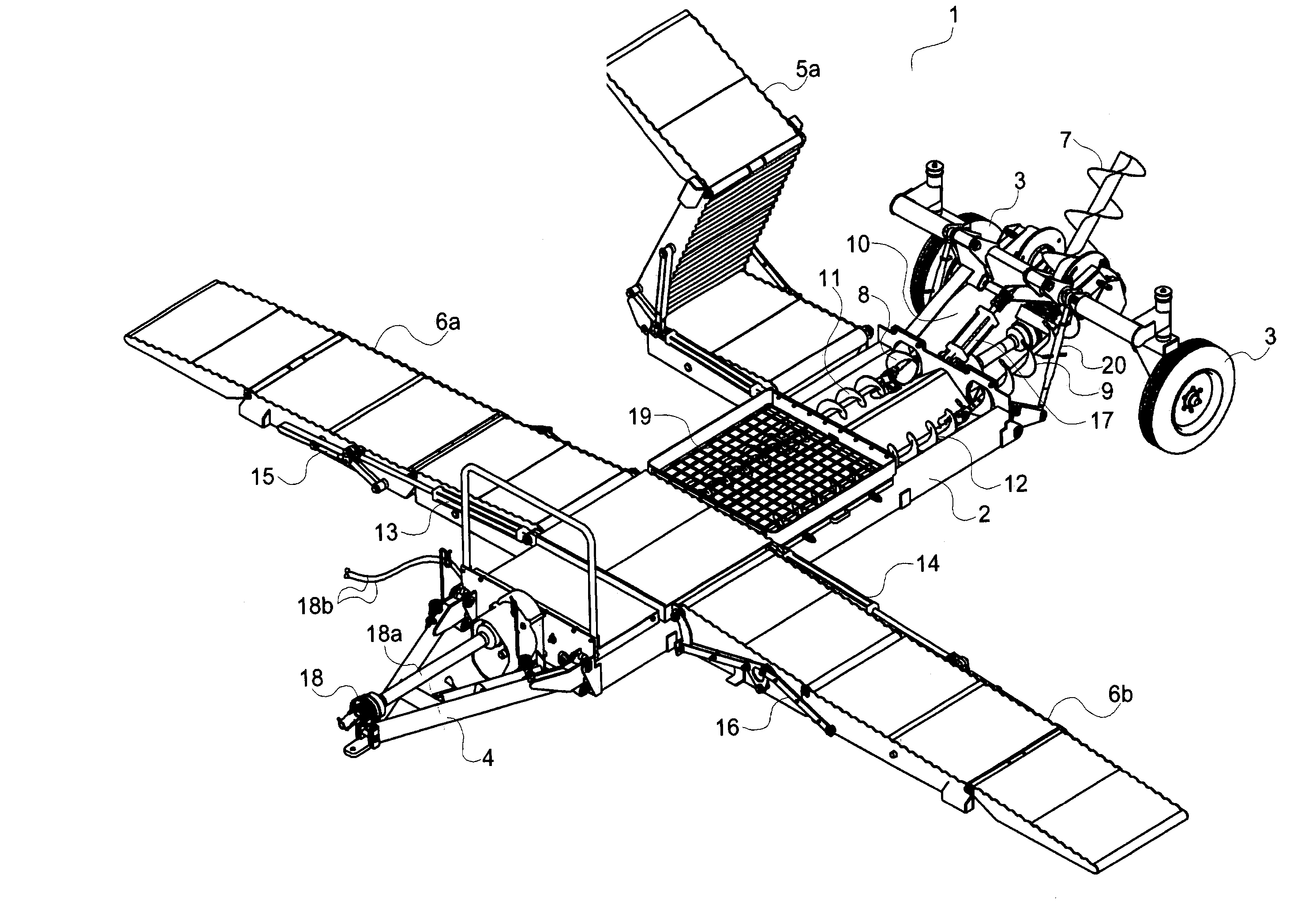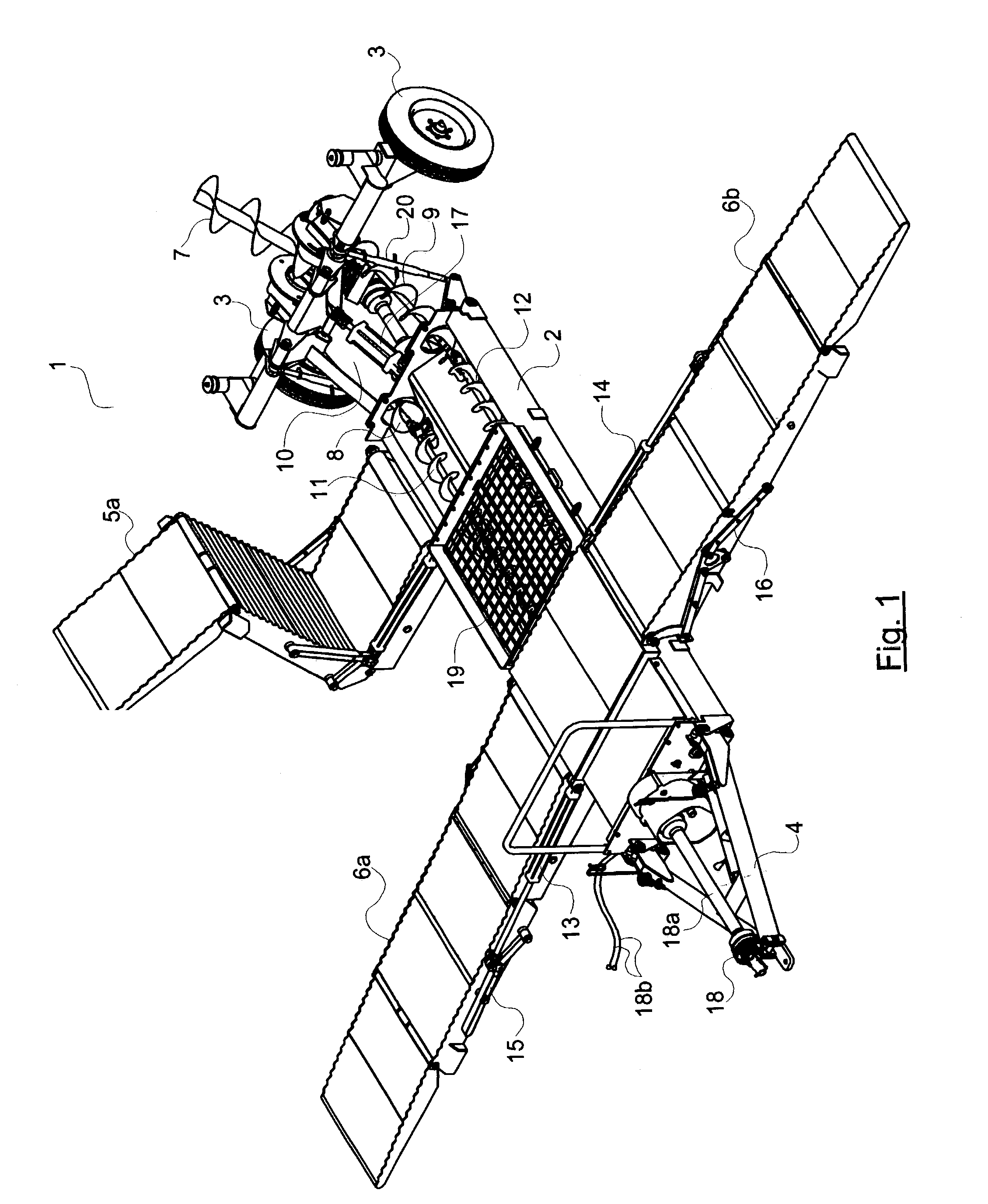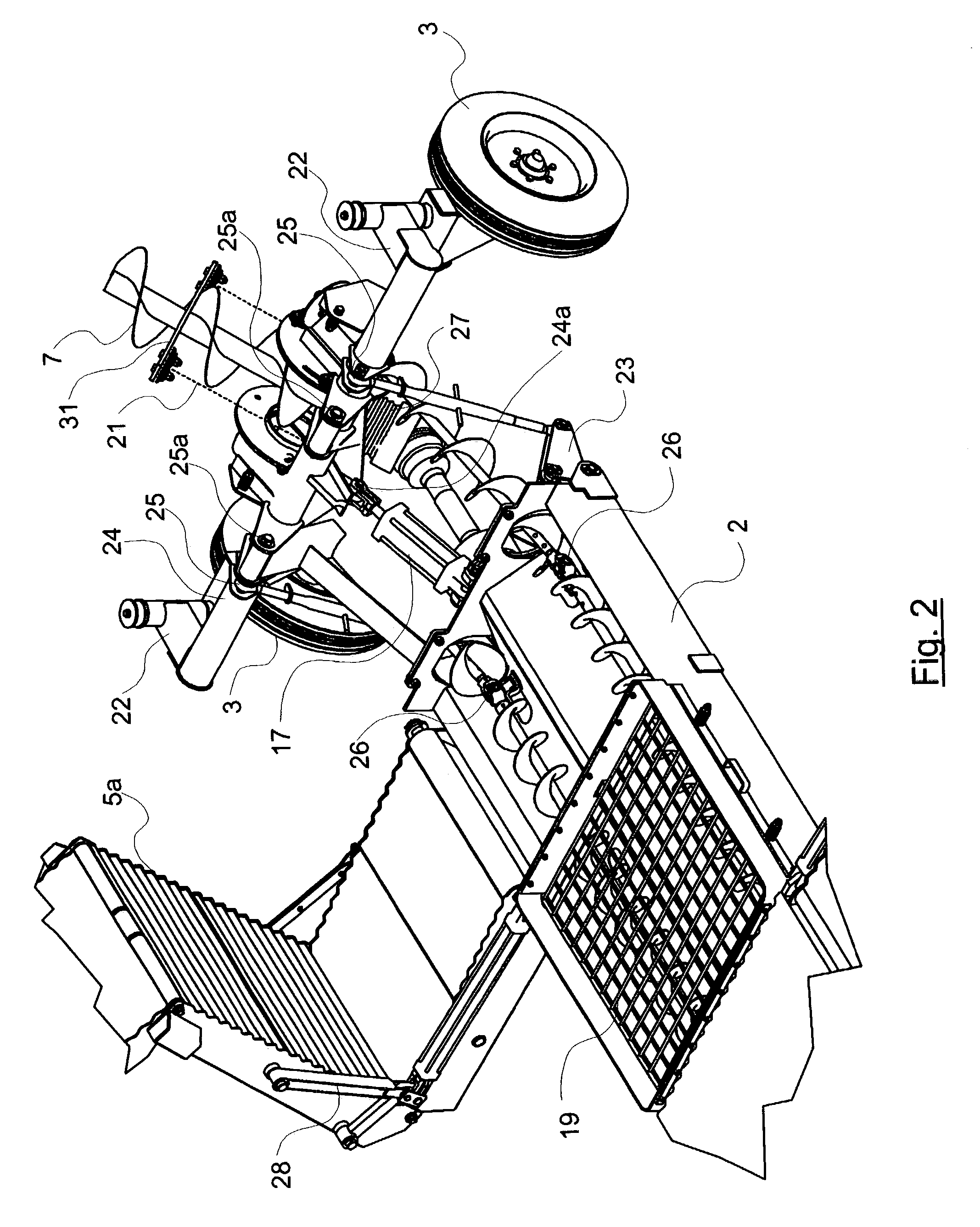Unloading system for particulate material
a technology of unloading system and particulate material, which is applied in the direction of refuse transferring, transportation items, applications, etc., can solve the problems of not being able to manoeuvre a semi-trailer or highway tractor truck into position relative to a conventional unloading system, and not being able to achieve full-time employment. the opportunity for continuous decreas
- Summary
- Abstract
- Description
- Claims
- Application Information
AI Technical Summary
Benefits of technology
Problems solved by technology
Method used
Image
Examples
Embodiment Construction
[0073]FIG. 1 gives an overall perspective view with some portions cut away or removed of the present invention shown generally as 1. The unloading device for particulate material, and more specifically for unloading grain from trucks and moving it into bins, has a generally longitudinal platform 2 which is supported at the rear end by retractable transport wheels 3 and at the front end by a hingedly connected hitch 4. The invention has a pair of right and left ramps at the rear and at the front. The centre portions of each of the front and rear ramps are integrally connected and form a portion of said platform.
[0074]In FIG. 1, the rear right ramp which is foldable is marked as 5a, while 5b has been removed for clarity of illustration. The front pair of ramps are marked as 6a and 6b. The ramps are parallel to one and other and spaced apart to allow a large grain truck, in fact, even an 18-wheeler, to drive up and then down the opposite side while unloading of material through cargo d...
PUM
 Login to View More
Login to View More Abstract
Description
Claims
Application Information
 Login to View More
Login to View More - R&D
- Intellectual Property
- Life Sciences
- Materials
- Tech Scout
- Unparalleled Data Quality
- Higher Quality Content
- 60% Fewer Hallucinations
Browse by: Latest US Patents, China's latest patents, Technical Efficacy Thesaurus, Application Domain, Technology Topic, Popular Technical Reports.
© 2025 PatSnap. All rights reserved.Legal|Privacy policy|Modern Slavery Act Transparency Statement|Sitemap|About US| Contact US: help@patsnap.com



